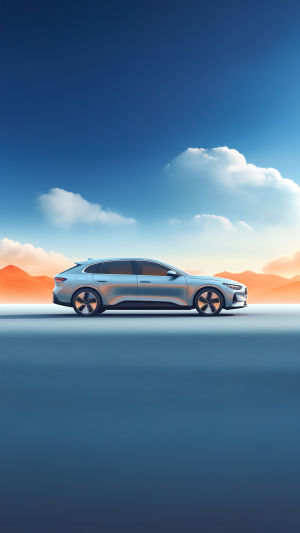Lykkers! Electric cars are everywhere, promising silent, clean drives. But whispers of <b>range anxiety</b>, <b>battery bombs</b>, and <b>tech tantrums</b> swirl just as fiercely. Is the <b>EV revolution</b> hitting real roadblocks, or are these just speed bumps?
Let’s plug into the real common issues – separating <b>valid concerns</b> from <b>overblown myths</b> – so you can navigate the switch with clear eyes.
<h3>Reliability Rollercoaster?</h3>
Data tells a nuanced story. While <b>EVs</b> have fewer moving parts than <b>gasoline cars</b> (no engine, transmission!), early complexity centered elsewhere. Some <b>electric SUVs</b> initially scored poorly in <b>reliability surveys</b>. Why? Not the <b>electric motor</b> or <b>battery pack</b> core, but glitchy <b>in-car electronics</b> and <b>software bugs</b>. Think temperamental <b>touchscreens</b>, finicky <b>phone pairing</b>, or <b>sensor faults</b>. The good news? Reliability is improving rapidly as tech matures.
<h3>Battery Aging Reality</h3>
Yes, <b>lithium-ion batteries</b> degrade. Capacity naturally reduces over time and charge cycles. Studies show an average loss of roughly <b>2.3% per year</b>. However, this isn’t linear or catastrophic. Climate plays a huge role: extreme <b>heat</b> (like Florida summers) accelerates degradation more than consistent <b>cold</b> (like Alaskan winters). Many modern <b>EV batteries</b> come with <b>8-year/100,000-mile warranties</b>, and real-world data shows many exceeding lifespan expectations significantly.
<h3>Chill Kills Range</h3>
Cold weather is an <b>EV</b>’s nemesis for <b>driving range</b>. Why? <b>Battery chemistry</b> slows down in the cold, reducing available power. Plus, energy is diverted to heat the cabin (unlike gas cars that use engine waste heat). Expect a <b>20-30% range reduction</b> in freezing temps. Using the <b>heated steering wheel</b> and <b>seats</b> instead of full cabin heat helps. Pre-conditioning the car <b>while plugged in</b> before departure is crucial for winter efficiency.
<h3>Glitchy Tech Blues</h3>
Modern <b>EVs</b> are rolling computers. Common frustrations include:
<b>Infotainment freezes/reboots </b> (notably in early Tesla models).
Faulty <b>door sensors</b> preventing opening/closing.
Inaccurate <b>range estimators</b>, especially after software updates.
<b>App connectivity issues</b> for remote control/charging monitoring.
While rarely safety-critical (like drive system failure), these glitches impact user experience and require <b>software updates</b> or dealer visits.
<h3>Seal the Deal (Properly)</h3>
Some models, particularly early Teslas, faced criticism for <b>poor build quality</b>, including <b>faulty seals</b>. This could lead to:
<b>Wind noise</b> at highway speeds.
<b>Water leaks</b> into the cabin or trunk, especially during car washes/heavy rain.
Potential <b>drafts</b> making occupants uncomfortable.
Improved manufacturing processes have largely addressed this, but it remains a point to check during any used <b>EV</b> purchase inspection.
<h3>Fire Fear Factor</h3>
The "EVs explode more!" myth persists. Data from agencies like the <b>National Transportation Safety Board (NTSB)</b> consistently shows <b>gasoline cars</b> catch fire more frequently per vehicle mile traveled. However, <b>lithium-ion battery fires</b> are different: they burn hotter, can reignite, and require specific <b>firefighting techniques</b> (large amounts of water, thermal imaging cameras). While the risk isn't higher, the management is more complex, contributing to perception issues.
<h3>Charging Curveballs</h3>
Beyond the car itself, <b>public charging</b> presents hurdles:
<b>Charger reliability</b>: Finding broken or out-of-service units.
<b>Network fragmentation</b>: Needing multiple apps/payment methods.
<b>Charging speed</b>: Actual <b>DC fast charging</b> rates can vary wildly based on battery state, temperature, and charger capability.
<b>Urban charging deserts</b>: Limited access for apartment dwellers without home charging.
<h3>Stars Shine Bright</h3>
Many <b>EVs</b> excel in reliability. Consistently praised models include:
<b>Nissan Leaf</b> (proven simplicity, especially earlier models).
<b>MG ZS EV</b> (strong value, solid reliability record).
<b>Kia Niro EV</b>/<b>Hyundai Kona Electric</b> (robust build, mature tech).
<b>Lexus UX 300e</b> (Toyota/Lexus build quality).
Researching model-specific forums and reliability surveys is key.
<h3>Test Drive Deeply</h3>
Anxiety remains? Skip the 15-minute dealer spin. Explore:
<b>Extended test drives</b> (offered by many brands/dealers).
<b>EV subscription services</b>.
<b>Long-term rentals</b> (Turo, traditional agencies).
Living with an <b>EV</b> for days or weeks reveals its real-world quirks and benefits.
<h3>Charge Forward Wisely</h3>
Lykkers, <b>electric cars</b> aren't flawless magic carpets. They face real challenges: <b>cold-weather range</b>, <b>battery aging</b>, <b>tech glitches</b>, and evolving <b>charging infrastructure</b>. Yet, the core <b>powertrain</b> is inherently robust, fire fears are statistically overblown, and reliability is climbing fast. Knowledge is power. Research specific models, understand the actual limitations for your climate and driving needs, and consider a deep trial. What’s your biggest EV worry, or your best ownership tip?





